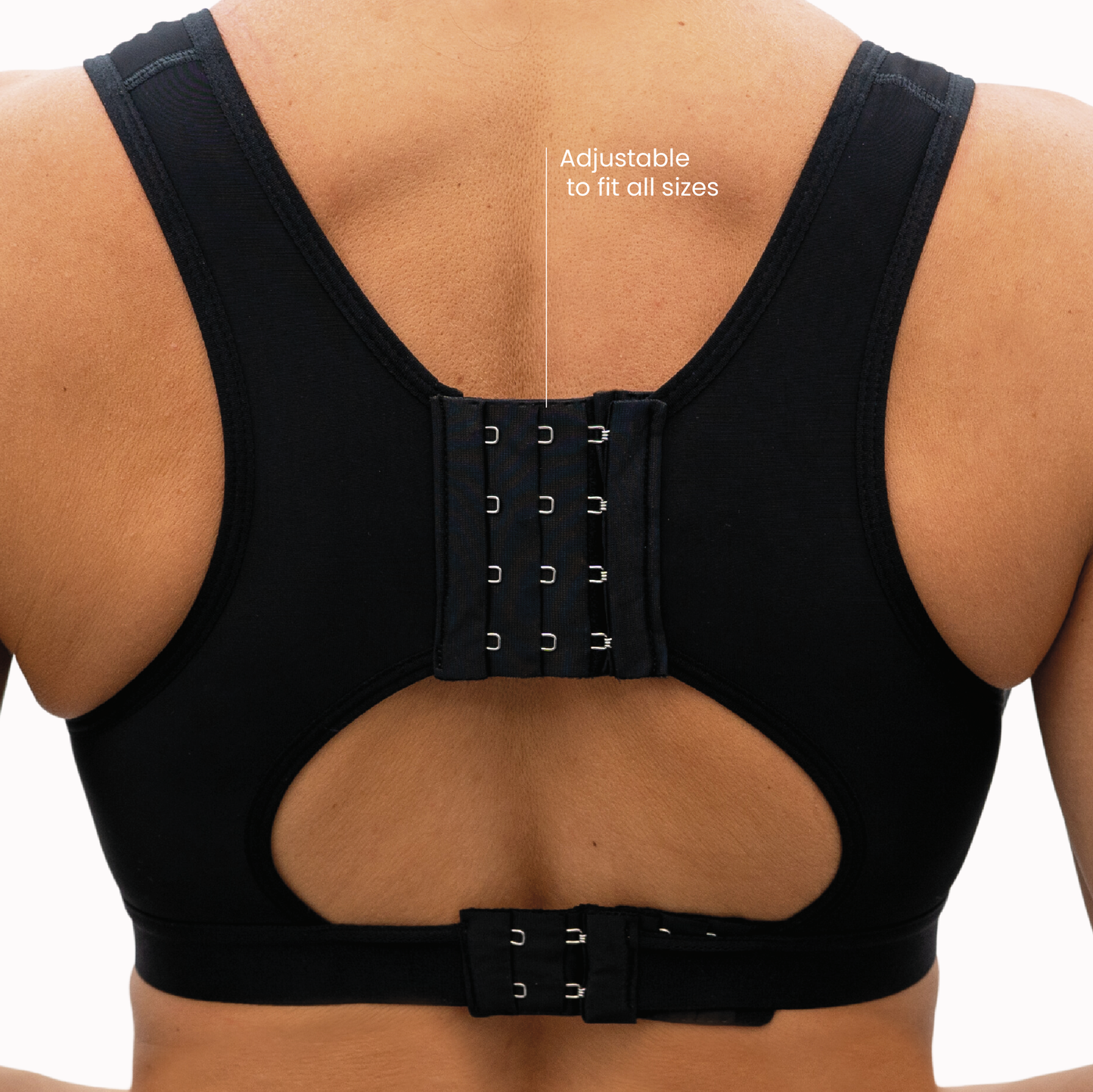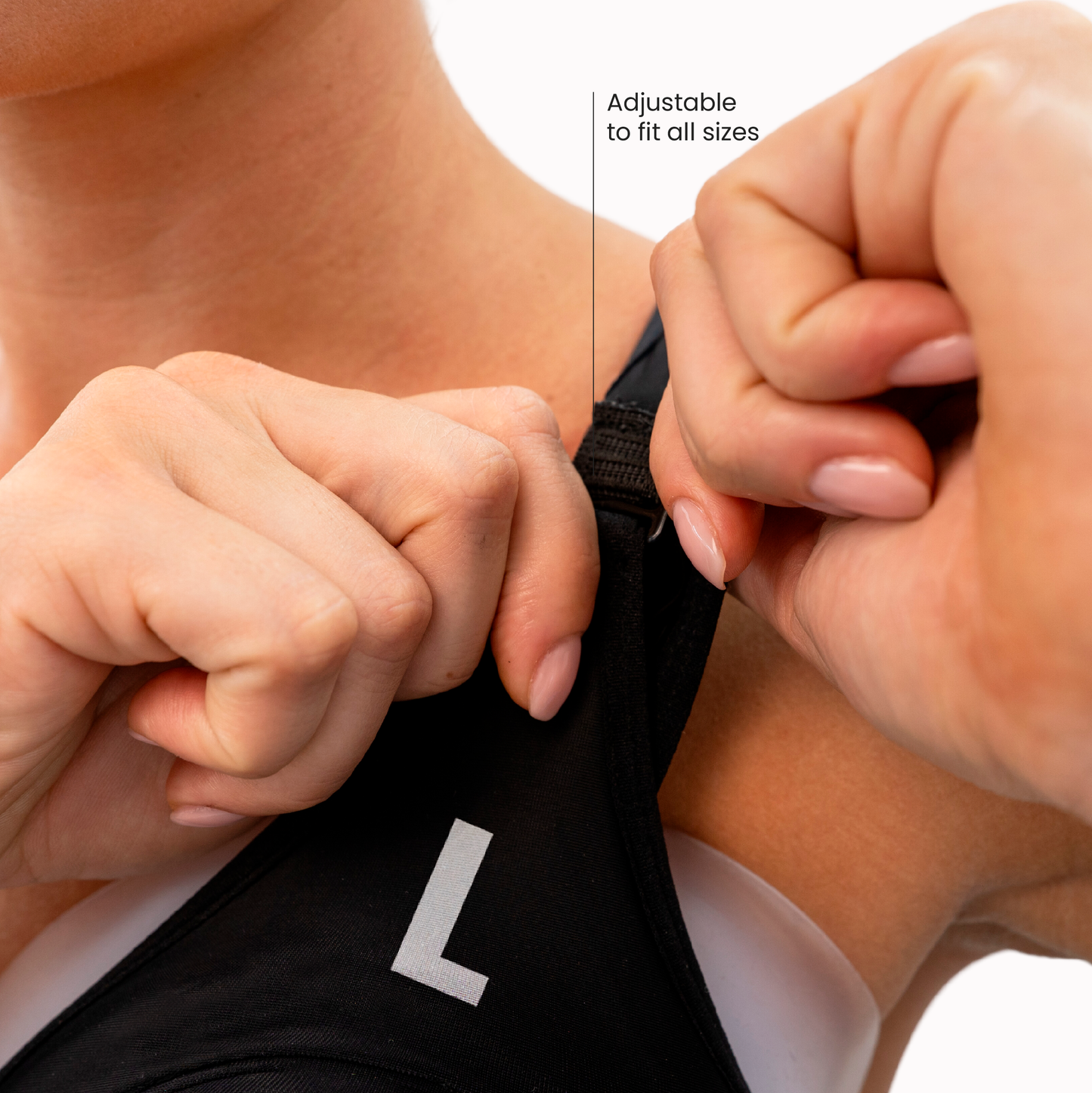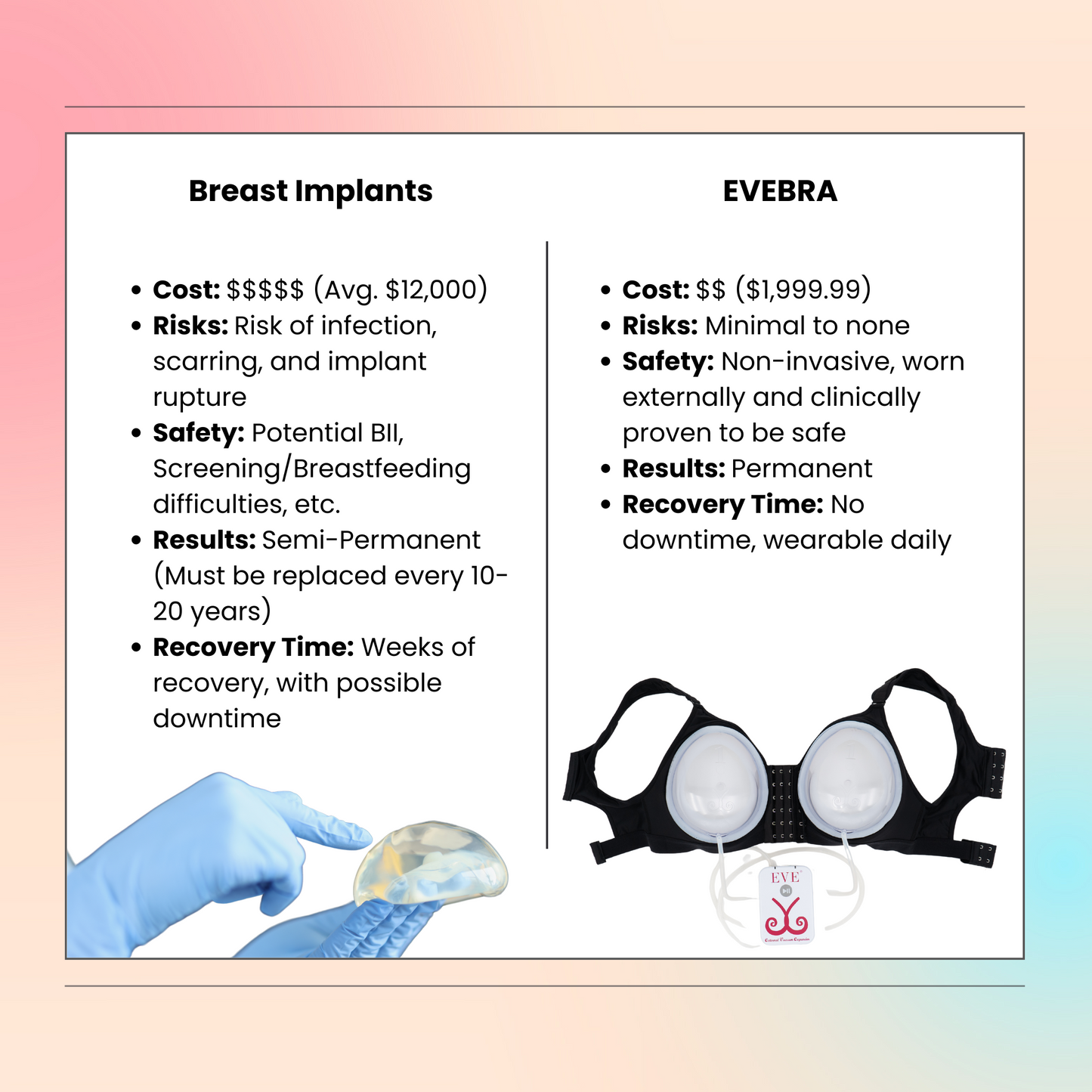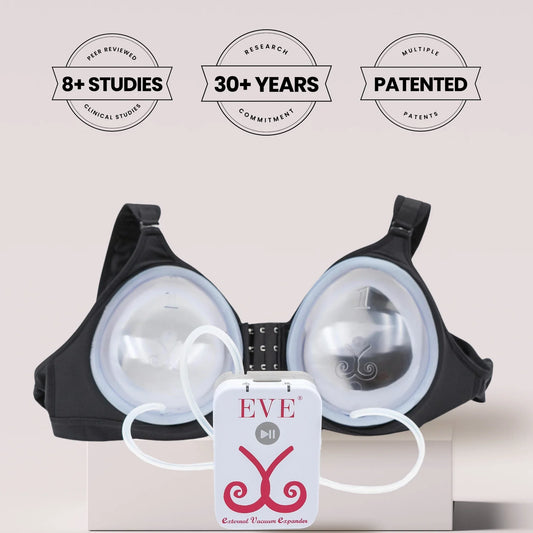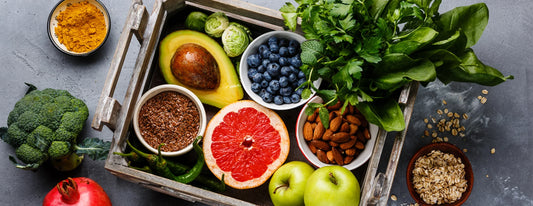
Common Concerns About Breasts After Pregnancy: What to Expect
Share
Breasts undergo significant changes throughout pregnancy and breastfeeding, as the body adapts to support a growing baby. Many women experience concerns about breast size, shape, and overall health after pregnancy. This article addresses common changes and challenges and offers guidance on managing and caring for your breasts during and after this period.
Physical Changes in the Breasts

Breast Size and Shape
During pregnancy, your breast size increases as the body prepares for milk production. Your breasts may feel fuller and heavier, and some women experience changes in breast shape. The increase in fatty and breast tissue during this time is normal, as the body prepares to nurture the baby.
The pre-pregnancy size of the breasts may not return after giving birth, as many women experience a little sagging or an overall change in the appearance of their breasts. Stretch marks can also form because of the rapid growth your breasts may undergo, and your breasts may look and feel different even after milk production stops.
Changes in Breast Tissue and Skin
Your breasts contain denser tissue during and after pregnancy. The breast tissue extends up toward the armpit, causing changes in the contours of your bust line. You will certainly notice this extension more during breastfeeding because, during that period, your milk ducts are filled and active. Your breast skin may stretch as a result, sometimes leading to a stretched out or sagging breast appearance after milk production ends.
Breast Changes During Breastfeeding

During pregnancy, you will experience hormonal changes that prepare your body for milk production. After your baby is born, milk starts to fill the breasts, which can cause breast changes. As the milk ducts fill, your breasts will feel firm, tender, or even painful. These changes are temporary and typically subside as the milk supply stabilizes.
Breastfeeding-Related Concerns
Breast Engorgement
One of the most common issues new mothers face is breast engorgement. This occurs when the breasts become overly full. During engorgement, you will notice that one or both breasts have become misshapen. When one breast produces more milk than the other, it can lead to breast asymmetry, which means that one of your breasts looks larger than the other. A lot of women describe engorgement as a painful, swollen, and throbbing sensation. Of course, the level of severity varies from mother to mother.
To alleviate breast engorgement, try frequent feeding from the affected breast. You can also massage the breast lump towards the nipple, and apply warm flannels or take a warm shower. These techniques can help reduce pressure and encourage milk flow to relieve the engorgement.
Leaking Breast Milk
During the early months of breastfeeding, it is normal to experience leaking milk. Breast milk may leak at any moment and without explanation, especially during letdown (when milk is pushed out by hormonal release) or when the baby cries. Some women continue to leak milk for several months or even years after weaning. We recommend wearing breast pads to help manage leaks.
Uneven Milk Production
It’s common for one breast to produce more milk than the other, and that might cause one of your breast to look bigger than the other; breast asymmetry. If you notice this happening, during breastfeeding, it is best to offer the baby the affected breast more frequently to balance out milk production.
Common Breast Problems After Pregnancy
Sagging Breasts
Sagging breasts are a common concern among women who have given birth, regardless of whether they breastfeed, and it might be one of yours too. Research indicates that breasts grow an average of 22% during pregnancy, causing the skin and supporting tissues to stretch. This change, along with losing fullness after breastfeeding, can make breasts sag.
We recommend wearing a supportive bra during and after pregnancy, weaning gradually, and losing pregnancy weight slowly to help minimize sagging. For women who are significantly concerned, our EVEBRA - Non-Surgical Breast Enlargement Device may be an option to restore breast shape.
Nipple and Breast Pain

Cracked nipples are a common problem for breastfeeding mothers, especially if the baby doesn’t latch correctly. Other causes can include:
-
dry skin
-
incorrect positioning
-
using a breast pump at too high a setting.
Painful breasts can also indicate:
mastitis (painful inflammation of the breast tissue), blocked milk ducts, or thrush. Applying a small amount of breast milk to cracked nipples can soothe and promote healing. If painful breasts persist, consult a lactation consultant or breastfeeding counsellor for support. Never apply any ointments or creams to your nipples without consulting your healthcare provider.
Breast Health Concerns After Pregnancy
Mastitis and Breast Infections
As mentioned earlier, mastitis is an inflammation of the breast tissue that can develop into a serious infection. This condition is often caused by blocked milk ducts or breast engorgement. Symptoms include flu-like symptoms such as fatigue, muscle aches, and a raised temperature.
Mastitis can progress rapidly, so it’s important to seek medical attention if you experience red streaks on your breasts, flu-like symptoms, or painful lumps. If frequent emptying of your breast does not alleviate the symptoms, your doctor may prescribe antibiotics that are safe during breastfeeding.
Blocked Milk Ducts and Breast Abscesses
Your milk ducts are the small tubes in the breast that carry breast milk to the nipple. Blocked ducts occur when milk flow is obstructed. A blocked milk duct can present as a small, hard breast lump or a sore, bruised area. If not addressed, a blocked duct can lead to a breast abscess, which is a pocket of pus in the breast that requires medical treatment.
Breast Cancer Concerns
Some breast changes after pregnancy can mimic the symptoms of breast cancer, such as lumps, changes in skin texture, or nipple discharge. While these changes are usually harmless, it’s always best to discuss any unusual symptoms with your doctor. Post-pregnancy breasts often feel different due to increased fatty tissue and residual breast milk, but it’s important to rule out serious conditions by checking with your care provider.
Managing Breast Appearance and Health
Wearing a Supportive Bra
During pregnancy and breastfeeding, wearing a well-fitting bra is essential for comfort and breast support. As the breasts grow and change, a good bra provides the needed support to prevent back, shoulder, and neck pain. Without proper support, the extra weight from the growing breasts can strain these areas and cause discomfort.
A supportive bra also helps manage the changes in breast size and shape, which can vary significantly due to milk production and engorgement. Choosing the right bra size is crucial during this period because an ill-fitting bra can put pressure on the milk ducts, leading to blocked ducts or even mastitis. We recommended getting fitted regularly, as breast size may continue to change throughout pregnancy and breastfeeding.
Look for bras made of soft, breathable fabric with wide straps and full coverage to accommodate changes. Consider nursing bras with clips for easy feeding access and bras without underwire, as underwires can sometimes add pressure to the breasts and contribute to blocked ducts.
Consider Non-Surgical Breast Enlargement
After pregnancy and breastfeeding, some women consider a breast lift to restore pre-pregnancy size and shape. Our Non-Surgical Breast Enlargement Device can address sagging breasts and create a more youthful contour. This option is a natural, gentle, and pain-free method that helps tissue growth without the use of time-consuming and painful surgical interventions.
When to Stop Breastfeeding
Many women are unsure about the right time to stop breastfeeding, and the decision can feel overwhelming. However, there is no universal rule for when to wean, as it’s a highly personal choice that depends on the needs and comfort levels of both you and your baby. Some mothers choose to breastfeed for just a few months, while others may continue for a year or more. Factors like the baby’s nutritional needs, the mother’s work schedule, and personal preferences all play a role in this decision.
Health experts, such as the American Academy of Pediatrics, recommend breastfeeding exclusively for the first six months and then continuing along with solid foods for at least a year. However, each situation is different, and what works best for one family may not suit another.
Gradual weaning—slowly reducing breastfeeding sessions over time—is often recommended, as it helps the body naturally decrease milk production, which reduces your risk of breast engorgement, blocked milk ducts, and discomfort. This method also allows both you and your baby to emotionally adjust to the change. During this period, offering comfort and alternative forms of nourishment to your baby can make the transition smoother.
Coping with Emotional Changes After Pregnancy
Body Image Concerns
Changes in breast size, shape, and breast tissue can impact how you feel about your body after pregnancy. Some women find it difficult to accept their post-pregnancy breasts and may experience feelings of insecurity. Talking to a breastfeeding counsellor or joining support groups can be helpful.
Dealing with Breastfeeding Challenges
Breastfeeding isn’t always easy, and many women encounter challenges like cracked nipples, low milk supply, or painful breasts. Seeking support from a lactation consultant can help you navigate these issues and find solutions.
Practical Tips for Breast Health After Pregnancy
Use of Warm Flannels and Chilled Cabbage Leaves
For sore or engorged breasts, applying warm flannels before feeding and using chilled cabbage leaves afterward can reduce discomfort. The warmth helps promote milk flow, while the cabbage leaves soothe the skin and decrease swelling.
Proper Feeding Techniques
Ensuring that the baby latches correctly can prevent cracked nipples and blocked milk ducts. If you’re unsure, consult a lactation consultant for advice on positioning and technique.
Conclusion
Navigating breast changes during and after pregnancy can be challenging, but understanding what to expect and when to seek help is key. By staying informed and seeking support when needed, you can maintain your breast health and find comfort during this transitional period.
References
Breast changes during or after pregnancy. (2023). Breast Cancer Now. https://breastcancernow.org/about-breast-cancer/breast-lumps-and-benign-not-cancer-breast-conditions/breast-changes-during-or-after-pregnancy/#:~:text=These%20changes%20are%20caused%20by,size%20of%20nipples%20and%20areola
Pillay, J., & Davis, T. J. (2023, July 17). Physiology, Lactation. Nih.gov; StatPearls Publishing. https://www.ncbi.nlm.nih.gov/books/NBK499981/
Lindberg, S. (2020, July 24). Breasts After Breastfeeding: How They Change and What You Can Do. Healthline; Healthline Media. https://www.healthline.com/health/breastfeeding/breasts-after-breastfeeding
Chauhan, G., & Prasanna Tadi. (2022, November 14). Physiology, Postpartum Changes. Nih.gov; StatPearls Publishing. https://www.ncbi.nlm.nih.gov/books/NBK555904/
Breast Engorgement: Causes, Complications & Treatment. (2022, October 19). Cleveland Clinic. https://my.clevelandclinic.org/health/diseases/breast-engorgement
American Pregnancy Association. (2020, April 27). Breast Changes During Pregnancy. https://americanpregnancy.org/healthy-pregnancy/changes-in-your-body/breast-changes-during-pregnancy/





